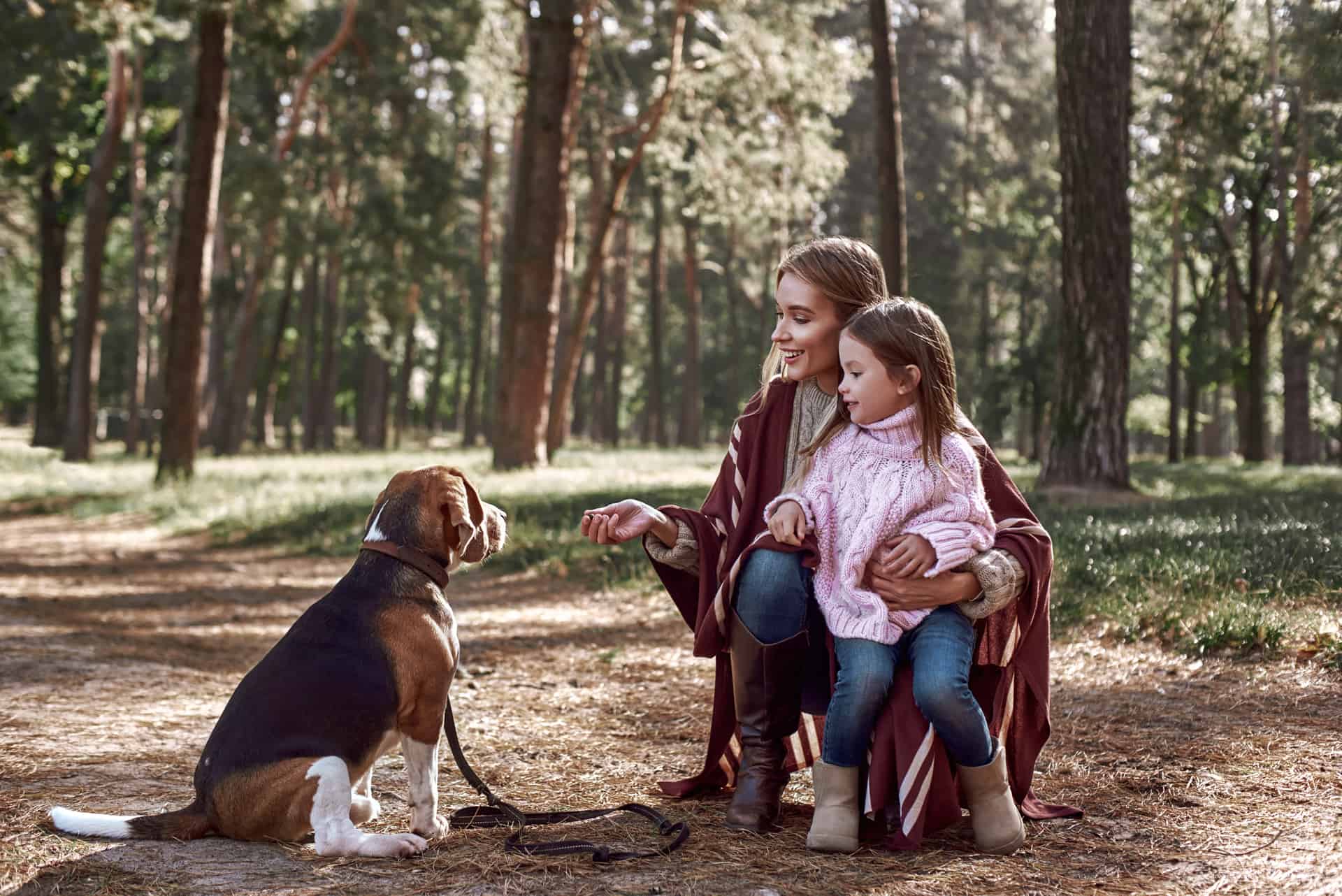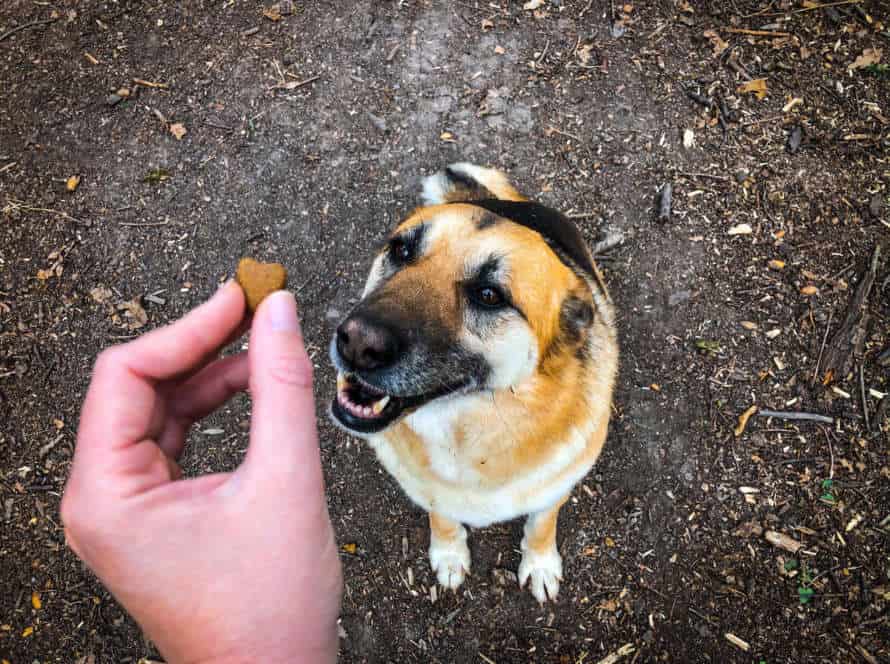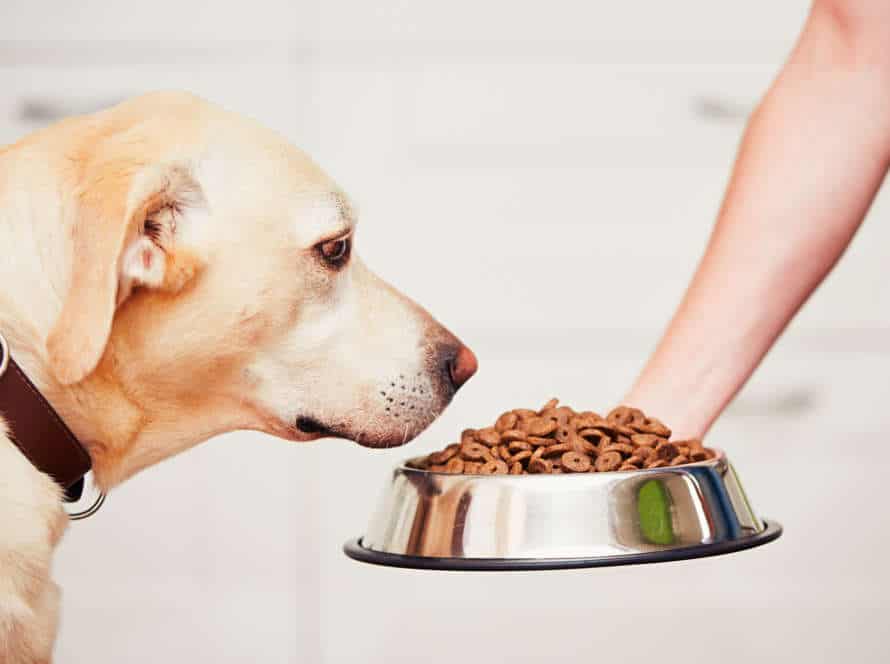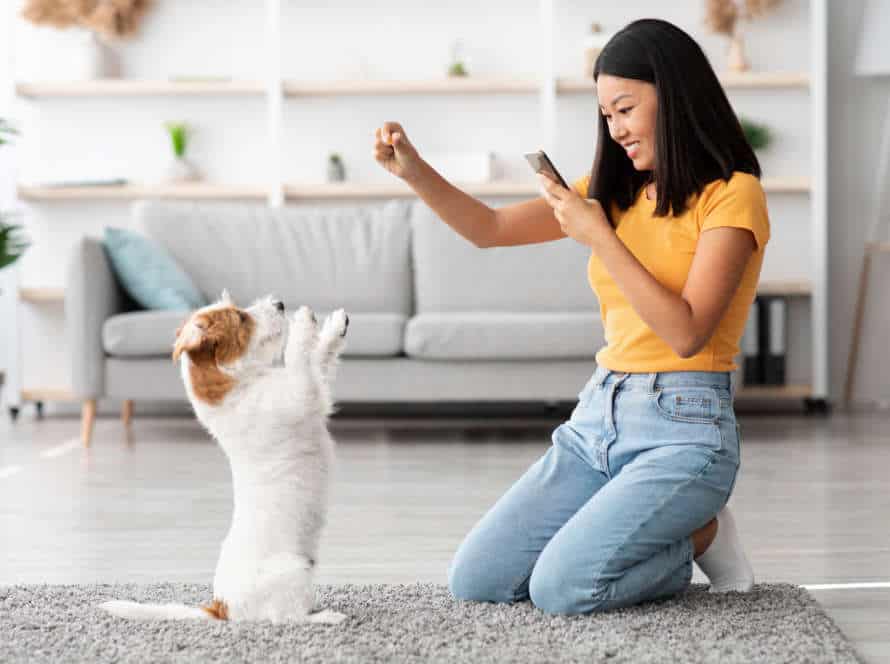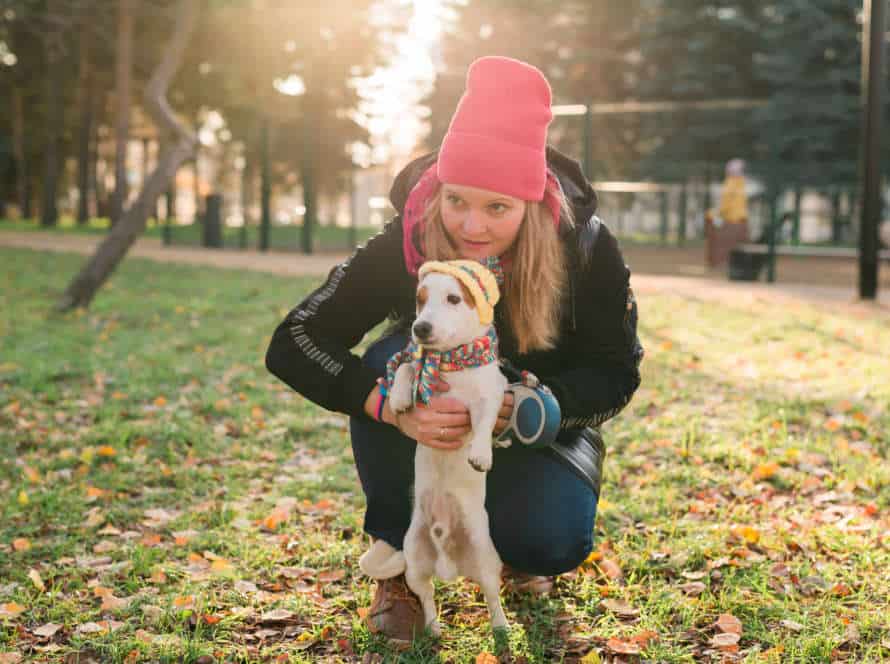Adult Dog Exercise: Tips for a Fit and Happy Pet
Exercise is essential for adult dogs’ physical and mental health. Here are some tips to keep your pup healthy and happy:
- Walks: Aim for a minimum of 30 minutes of walking per day. Spice it up with different routes, games, and training.
- Outdoor Playtime: Take your adult dog to a park or fenced backyard for playtime. Play fetch, tug-of-war, or hide-and-seek.
- Indoor Exercise: On bad-weather days, exercise indoors with puzzles, balls, or agility equipment.
- Swimming: Low-impact exercise great for dogs with joint issues. Go swimming in lakes, rivers, or dog-friendly pools.
Pro Tip: Always check your vet before beginning a new exercise routine with your adult dog, especially if they have existing health conditions.
The Importance of Exercise for Adult Dogs
Exercise is essential for adult doggos. It keeps them fit and healthy, releases stress, anxiety, and boredom. It also helps them bond with their humans and improves their mental and physical wellbeing. Let’s learn why exercise is important and how to make sure your pup is getting enough!
Benefits of Regular Exercise
Exercise is key for adult dogs’ physical and mental health. These are the benefits:
Physical Health: Exercise boosts muscle tone, coordination, and flexibility. Also builds bones, joints, and improves blood circulation and digestion.
Weight Management: Too much weight can lead to health issues. Exercise can help burn calories, maintain a healthy weight, and lessen the risk of diseases like diabetes and heart disease.
Behavioral Benefits: Exercise helps release energy, reducing bad behaviors and anxiety. It also upgrades mood, reduces stress, and improves brain function.
Socialization: Exercise is a chance for your pup to mingle with other dogs and people. That way, they can learn better social skills and be happier.
Pro Tip: Talk to your vet ahead of any exercise plan. Choose the best one for your pup’s breed, age, and health.
How Much Exercise Does an Adult Dog Need?
Adult dogs need regular exercise to stay healthy, physically and mentally. How much they need depends on the breed and size. But all dogs benefit from set activities and playtime.
Benefits of exercise for adult dogs include:
- a healthy weight
- good heart health
- strong muscles
- mental alertness
- and reduced behavior problems (e.g. excessive chewing, digging, and barking).
To make sure your pet gets enough exercise:
- make a routine
- take into account their breed, age, and health
- choose activities that suit them
- and watch out for signs of injury or fatigue.
By giving them enough exercise, good nutrition, and vet care, your pet can stay happy and healthy.
Risks of Inadequate Exercise
Inadequate exercise can have severe impacts on adult dogs. This can lead to health issues and behavioral difficulties.
Some of the risks include:
- Obesity – Not exercising can cause weight gain, and many diseases.
- Joint problems – Muscles may weaken without regular exercise, leading to joint pain and issues.
- Boredom and destruction – Dogs with high energy, who don’t get exercising, may become bored and destruct.
- Reduced lifespan – Not enough exercise can cause health issues that can reduce their lifespan.
Thus, it is essential to give your adult dogs regular exercise. A combination of going for walks, playing, and mental activities, can keep your dog healthy, content, and well behaved.
Types of Exercise Suitable for Adult Dogs
Exercising your adult pooch can be a great way to keep them healthy and content. From hikes to running games and agility courses, there are many activities to choose from. Each exercise has unique advantages, so it’s essential to pick ones that fit your pup’s age and condition. In this segment, let’s explore the various types of exercise beneficial for adult dogs.
Walking
Adult dogs can benefit greatly from walking. It’s an excellent form of exercise. Here are some other great exercises:
- Brisk walking. Helps maintain cardiovascular health and muscle strength. Also aids joint flexibility.
- Trail hiking. Dogs can explore new environments and get a tougher workout.
- Swimming. Low-impact. Builds muscle and boosts flexibility, especially for senior dogs with joint problems.
- Fetch. Great whole-body workout. Improves agility and coordination.
- Running. High-energy exercise. Increases endurance. But start slow and build up fitness level gradually.
Pro tip: Before starting a new exercise routine, always check with your vet. Consider age, breed, size, and fitness level.
Running and Jogging
Running and jogging are two great ways to keep your adult dog fit and happy. But not all breeds can handle it. Consider these alternatives instead:
- Walking – A stroll is perfect for dogs not suitable for running or jogging.
- Swimming – Swimming is a low-impact exercise that is beneficial for overweight or arthritic dogs.
- Interactive Play – Fetch and tug-of-war are a fun way to give your pup exercise and mental stimulation.
- Agility Training – Doga and agility training can help dogs build confidence, coordination, and agility.
Pro Tip: Always speak to your vet before starting any new exercise routine for your dog – especially if they have any medical conditions. Exercise is key to a healthy and happy life for your adult dog.
Swimming
Swimming is a brilliant exercise for adult dogs! It gives them a full-body workout and is easy on their joints. Here are some tips for swimming with your adult pooch:
- Ensure they’re OK with water and know how to swim. Start in shallow water and use treats to encourage them.
- Put a life jacket on them to keep them afloat and help them stay buoyant.
- Choose a secure, clean swimming spot – such as a pool or lake without any current or choppy waves.
- Keep an eye on them at all times. Look for signs of distress, such as heavy panting or difficulty breathing.
- Gradually build up their swimming time and intensity. Give them breaks for rest and water. Swimming is a great way to keep your furry friend fit, healthy and happy!
Hiking
Dogs are great for hiking. It’s important to know what kind of exercise is good for adult dogs.
- Walking: Short or long walks are good low-impact exercises.
- Hiking: For more adventurous pups, hikes can be hours of fun and exercise.
- Running: Breeds like Labradors and German Shepherds are great running buddies.
- Swimming: A great low-impact workout that’s easy on joints.
Remember to gradually increase stamina, hydrate regularly, and take breaks – especially when it’s hot. Your dog’s health and fitness are essential for their quality of life. Give them the exercise they deserve!
Preparing for Exercise with Your Adult Dog
Exercise is vital for adult dogs! It boosts their wellbeing and happiness. Before starting to exercise together, there are some key points to ponder. This section will provide advice to you and your adult pup to make sure you are set for a fitness journey. So, let’s get fit and healthy together!
Vet Checkups and Health Concerns
Look after Fido! Regular check-ups are essential for a healthy pup. Here’s what to do:
- Schedule vet visits to make sure your dog is fit enough to exercise and spot health issues.
- Discuss needs and limitations with the vet. Consider age, breed, weight and existing conditions.
- Warm up with activities like walking and stretching to prevent injury and muscle strains.
- Watch for signs of fatigue, discomfort or distress. Then adjust exercise intensity and duration.
- Stay on top of vaccinations and parasite prevention meds. This shields against diseases contracted during exercise.
Pro tip: Regular check-ups and exercise leads to a happier, longer life for your pup.
Training and Sociability
Training & sociability are two core things to consider when getting your adult dog ready for exercise.
Be sure they know basic commands like “sit” & “stay” to avoid injuries.
Introduce them to other people & dogs in a controlled environment to keep them sociable & prevent aggressive behaviour.
Here are tips:
- For training – use positive reinforcement techniques like treats & verbal praise to motivate. Start with short sessions & gradually increase duration.
- For sociability – socialize with other dogs in neutral territory & introduce strangers gradually. Reward good behavior.
With correct training & sociability, your adult dog will be ready for a fit & happy exercise routine.
Equipment and Safety
Before starting a workout with your grown-up dog, it’s essential to have the correct gear and follow safety rules. Things you need to know:
Equipment:
- Leash and collar or harness, that fit properly.
- Good shoes for yourself, to stop slipping or falling.
- High quality poop bags for your dog’s poop.
Safety:
- Bring water for you and your pup.
- Stick to flat surfaces, to avoid joint and muscle strains.
- Don’t exercise in high or low temperatures.
- Keep an eye on your dog’s behavior. If they seem tired, stop right away.
By having the right equipment and following the safety guidelines, you can reduce the risk of injuries, have fun, and create a healthy routine for your pooch.
Exercise Tips for Adult Dogs
Regular exercise is a must for adult pooches. It keeps ’em in shape, aids digestion, and strengthens the bond between you and them. But, there are right ways to exercise an adult pup. Let’s look at some tips and tricks that can benefit your grown-up fur-baby.
Start Slow and Gradual
Exercising adult dogs is essential for their physical & mental well-being. Start with short, low-intensity walks. Increase the duration & intensity gradually as stamina improves. Provide plenty of water & rest during & after exercise. Avoid exercising in extreme weather conditions. Consider the breed & adjust the routine accordingly. Border Collies & Huskies need more exercise than Bulldogs & Pugs. Consult with a vet before starting any new routine.
Be Consistent
Consistency is essential when exercising adult dogs. Set a routine that works for you and your pup to ensure their health and happiness. Here are some tips to stay consistent:
- Plan out a schedule for activity and duration.
- Include different types of activities to keep them engaged.
- Start off slow and gradually increase intensity.
- Monitor progress and adjust the routine.
- Make it a fun experience for both of you.
And remember: Consistency not only helps your pup’s health, but strengthens the bond between you and your furry friend!
Mix up the Routine
Humans aren’t the only ones that get bored with their exercise routine. Dogs need variety too! Here are some tips to spice up your adult dog’s workout:
- Take a swim! Swimming is a great low-impact exercise and a great way to cool off in hot weather.
- Play fetch! Fetch is a classic game that provides both physical exercise and mental stimulation.
- Try a new walking route! Take your pup on a new path or trail to explore different sights and smells.
- Play with other dogs! Dogs love to socialize and play with other pooches. Set up a playdate or visit a dog park.
- Invest in agility equipment! Jumps and tunnels are a great way to challenge your dog, both physically and mentally.
Mixing up your adult dog’s exercise routine is important for their physical and emotional well-being. So, keep it fun and keep them happy!
Watch for Signs of Overexertion
Overexertion can be risky for any pup – especially adult dogs. As a pet owner, it’s smart to spot overexertion signs during exercise and take action. Here are some to watch out for:
- Heavy panting
- Excessive drooling
- Vomiting
- Lethargy/weakness
- Incoordination/stumbling
If you observe these signs while exercising with your adult dog, slow down or stop right away. Give your pup some water and time to rest and recover. Gradually increase the duration and intensity of exercises – let your dog’s fitness level and age guide you.
Pro Tip: Have a chat with your vet before starting a new exercise program with your adult dog.
Fun Exercise Ideas for Adult Dogs
Exercise is super important for adult doggos. But how do you start? Walks and runs are a good place to begin. But there are more creative ways to give your pup a good workout. Here are some fun ideas! Your dog will be feeling energised and excited in no time.
Interactive Toys
Interactive toys are great for your adult pup! Here are 3 types: Puzzle Toys, Tug Toys and Fetch Toys.
- Puzzle Toys test your pup’s problem-solving skills and provide physical and mental exercise. Treat-dispensing balls, interactive feeders and puzzle boards are good examples.
- Tug Toys are perfect for a game of tug-of-war and can help bond with your pup. Look for tug toys made of rope or rubber. This can give your pup a great upper-body workout and relieve stress.
- Fetch Toys are classics. They give your pup awesome cardio exercise and strengthen their muscles. Look for toys made of durable rubber or plastic. Make sure they are age-appropriate!
Agility Training
Agility training is a great way to give adult dogs physical, mental and emotional stimulation. Here’s how to begin:
- Invest in or make agility equipment like tunnels, weave poles and jump bars. Start simple – running, jumping or crawling.
- Be patient and reward your pup for successes. Treats and praise are great motivators.
- Mix up the exercises to keep it interesting. Games like fetch, frisbee and swimming are great options.
- Check with your vet to make sure the routine is appropriate for your pup’s breed and health.
Pro tip: Get a clicker to help with training accuracy and speed up learning. Have fun – agility training is a great way to bond and give your furry friend a stimulating workout.
Mind Games and Puzzle Toys
Mind games and puzzles are terrific for keeping your adult pup both mentally and physically active. This encourages problem-solving and reduces the risk of boredom, which can lead to destructive behavior. Have fun with these exercise ideas:
- Hide-and-seek: Hide treats and toys around the house and get your pup to sniff them out.
- Puzzle toys: Give them interactive toys that require problem-solving to win a reward.
- Snuffle mat: Hide treats in a mat and watch your pup sniff them out.
- Treasure hunt: Hide a toy or treat in an old sock or towel, roll it up and let them use their nose to find it.
These activities bring mental stimulation and physical activity to your furry friend – just remember to supervise them for their safety.
Dancing with Your Dog
Dancing with your pup is a great way to get fit and create a connection. Here are some ideas to get you two groovin’:
- Put on some tunes and boogie with your dog!
- Show your pup a few dance moves like twirls and spins.
- Use commands like heel and stay for extra structure.
- Set up a dance course with a hula hoop or agility cones.
Not only does dancing get you active, but it also makes for a stronger bond. Pro Tip: Stay patient and positive when teaching new moves. It’s all about having fun and sharing a special moment with your furry friend!
Exercise for Adult Dogs with Mobility Issues
Possessing a pup with mobility problems can be tough. Fortunately, there are ways to maintain your dog fit and active. Exercises for grown-up dogs with mobility issues may include low-impact activities such as swimming and basic stretches. In this article, we’ll discuss the different types of exercise your pet can do to stay active and healthy.
Swimming Therapy
Swimming therapy is great for adult dogs with mobility issues! It helps improve muscle tone, relieve pain and boost stamina. Here are some tips for using it with your pup:
- Make sure you supervise them and they have a life vest on.
- Start in shallow water and slowly increase the depth as your dog gets more comfortable.
- Use toys or treats to motivate your dog to swim and give them positive reinforcement.
- Watch their body language and stop if they show signs of distress or tiredness.
- After the session, dry your pup off with a towel to prevent ear infections.
Swimming therapy is a fun and effective way to keep your adult pup healthy and fit!
Canine Physical Therapy
Canine physical therapy is a must for adult dogs with mobility issues. A vet-physiotherapist designs custom exercises to help Fido build strength and maintain joint health. Here’s how to make exercise enjoyable for both you and your pup:
- Start slow, increasing intensity and duration over time. Respect your pup’s limitations and conditions.
- Pick low-impact exercises like swimming, walking, and gentle stretching.
- Reward Fido with treats and kind words to stay motivated.
- Use assistive devices to help Fido exercise safely and comfortably.
With the right physical therapy and exercise, your adult doggie can enjoy a long, happy life!
Low-Impact Exercise
Low-impact exercise is great for adult dogs with mobility issues. It helps with physical and mental health. Here are some tips to keep your adult dog healthy and active:
- Swimming – Good for dogs with arthritis, joint pain or mobility issues. Water reduces stress on joints and gives a full-body workout.
- Slow walks – Short ones to keep muscles active and prevent stiffness. Great for dogs with arthritis or other mobility issues.
- Gentle playtime – Tug-of-war, fetch, or hide-and-seek. Low-impact exercise and mental stimulation!
- Stretching – Stretching exercises can improve flexibility and range of motion.
Check with the vet before starting any exercise. Make sure it’s suitable for your dog’s needs.
Special Equipment for Mobility Issues
If you own an adult dog with mobility issues, there are some things you can do to help them stay active, healthy, and happy.
For special equipment:
- Get dog ramps and stairs. These aid your dog getting to high places, like a bed or a couch.
- Harnesses and canine splints can help with mobility and joint support.
- Orthopedic dog beds offer extra support for aching joints.
Exercises:
- Swimming is a low-impact exercise in water which helps build muscle and improves circulation.
- Go on short and frequent walks to avoid stiff joints and promote joint mobility.
- Give gentle massages and stretch them. This can improve blood flow and reduce stiffness and pain.
Consult your vet for advice on the best equipment and exercises for your dog’s specific mobility issues.
Frequently Asked Questions
Q: How much exercise does an adult dog need?
A: The amount of exercise your adult dog needs depends on their age, breed, size, and overall health. A general guideline is at least 30 minutes of moderate exercise, such as a brisk walk, twice a day.
Q: What are some fun and engaging exercise options for adult dogs?
A: There are countless ways to engage and exercise your adult dog, including walks, jogs or runs, hikes, swimming, fetch, and agility training. Dogs also enjoy mental stimulation through puzzle toys and training exercises.
Q: How can I ensure my adult dog is safely exercising?
A: Always consult with your veterinarian before starting an exercise regimen with your adult dog. Start slowly and gradually increase intensity, and be mindful of weather conditions and potential hazards (e.g. hot pavement, toxic plants).
Q: Can overweight or obese adult dogs still exercise?
A: Yes! In fact, regular exercise can help overweight or obese adult dogs lose weight and improve their overall health. Start slowly and consult with your veterinarian for a personalized exercise plan.
Q: How can I tell if my adult dog is getting enough exercise?
A: Signs that your adult dog may need more exercise include restlessness, destructive behavior, excessive barking, weight gain, and decreased energy levels.
Q: Are there any breeds that require more exercise than others?
A: Yes, certain breeds, such as working breeds (e.g. Border Collies, German Shepherds) and hunting breeds (e.g. Labrador Retrievers, Pointers) generally have higher energy levels and require more exercise to stay happy and healthy.

